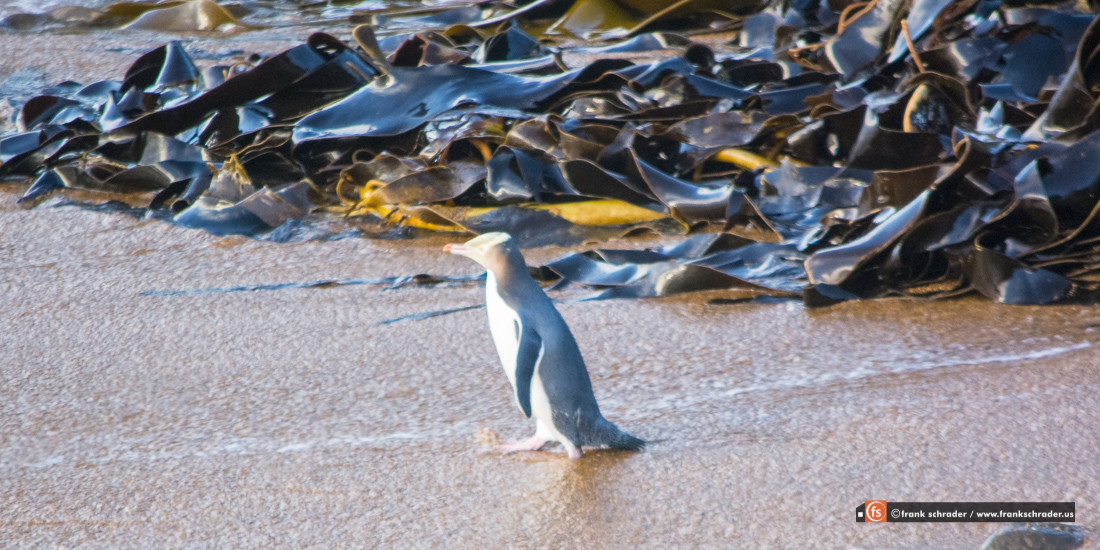
Yellow-Eyed penguins in the Wild…
It is pretty difficult to observe Yellow-Eyed penguins in the wild (outside of a conservation reserve where commercial tour operators help with the viewing experience by seating you on observation platforms) but not impossible: The area around Dunedin / Otago Peninsula is worth to be explored.
Wherever you go to see penguins you need to be there either at sunrise or sunset. It is only a short timespan to see them because they walk pretty straightforward from their dens into the ocean or vice versa. Bring binoculars along.
Sandfly Bay is worth a try. Even if you don’t see penguins you will still find a gorgeous beach with dunes and dune grass, besides of impressive sea lions.
Shag Point, north of Dunedin, has still a breeding colony, however, we couldn’t spot them. If you go you get rewarded with great coastal views, and seal colonies.
Web: Shag Point/Matakaea: Moeraki area, Otago region (doc.govt.nz)
A little further north of Dunedin: there is Moeraki Peninsula and you need to head out to Katiki Point. A trail that leads away from the lighthouse brings you to a hide-out overlook of the beach where a small group of Yellow-Eyed penguins lives.
Web: Katiki Point: Moeraki area, Otago region (doc.govt.nz)
Dunedin’s Penguin Place – Yellow Eyed Penguin Conservation Reserve
The Yellow Eyed Penguin Reserve at Penguin Place offers visitors the opportunity to visit a working conservation programme and to experience and photograph undisturbed penguin activity at close range through a unique system of hides and covered tunnels. The reserve is a private conservation effort to save one of the world’s most endangered penguins, the yellow-eyed penguin, from extinction. The reserve is funded entirely through the profits from the Penguin Place tour operation. The reserve is on private farmland and is run by farmer, Howard McGrouther. Points of interest in terms of sustainable tourism:
- The operation has set rules on the number of people allowed tours at any one time and take responsibility for enhancement of areas involved in tours.
- Penguin Place (PP) has set aside 40 acres for replanting of native bush. Over 10 000 trees have already been planted so far with another 20 000 still to be done.
- PP has created freshwater lakes for the birdlife.
- PP has built hospital facilities for sick and injured penguins. They provide all fish and antibiotics needed in treatment.
- PP employs a scientist to monitor penguin breeding.
- PP provide safe habitat for penguin breeding and they trap all year round for predators e.g. – feral cats, stoats, ferrets.
- PP has put in over 700 metres of camouflaged tunnels to remove any tourist impact on the penguins.
Website: www.penguinplace.co.nz

